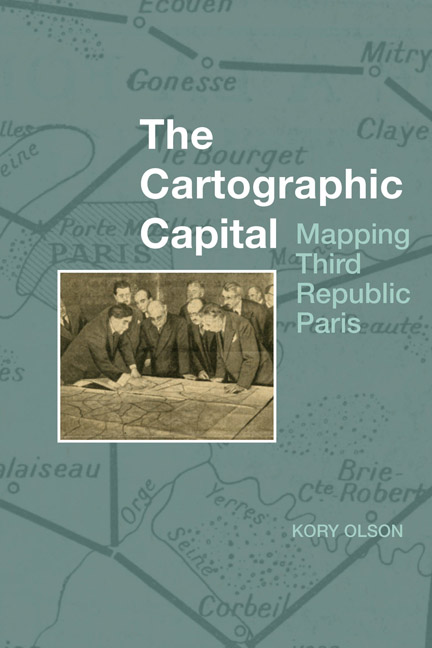Book contents
- Frontmatter
- Contents
- List of Figures
- Acknowledgements
- Introduction: Creating Republican Paris
- 1 Working with Maps
- 2 Creating Map Readers: The Rise of Geography and Cartography in Nineteenth-Century France
- 3 The Triumphant Republic: ‘Paris en 1889, les opérations de voirie exécutées entre 1871 et 1889’
- 4 A New Way of Seeing Paris: The Service Géographique's Carte de France
- 5 The Beginning of French Urbanism: Léon Jaussely's 1919 Plan d'extension
- 6 The Rise of Suburban Paris: Henri Prost's Carte générale
- Conclusion
- Bibliography
- Index
Conclusion
- Frontmatter
- Contents
- List of Figures
- Acknowledgements
- Introduction: Creating Republican Paris
- 1 Working with Maps
- 2 Creating Map Readers: The Rise of Geography and Cartography in Nineteenth-Century France
- 3 The Triumphant Republic: ‘Paris en 1889, les opérations de voirie exécutées entre 1871 et 1889’
- 4 A New Way of Seeing Paris: The Service Géographique's Carte de France
- 5 The Beginning of French Urbanism: Léon Jaussely's 1919 Plan d'extension
- 6 The Rise of Suburban Paris: Henri Prost's Carte générale
- Conclusion
- Bibliography
- Index
Summary
The German invasion of Poland in September 1939 precluded any urban reform for Paris, or the rest of France. The Nazi occupation of the capital and northern half of the country the next year meant that the Vichy government, not republican politicians, would now decide Paris's future and it did not take long for the new regime to assert its control. On 14 October 1940, the government suspended the Conseils généraux. In doing so, it removed elected officials from the department-level governing process. The loi du 16 novembre that same year gave Vichy officials the power to name mayors and municipal council members in communes with more than 10,000 residents. On 2 February 1941, the government suspended the 1932 Comité supérieur d'aménagement et d'embellissement et d'extension de Paris and created the Comité d'aménagement de la région parisienne (CARP) under the direction of the Délégation générale à l'Equipement National (DGEN). As part of this new mandate for Parisian administration, the Seine préfet, named by Vichy, had the power to ‘proposer toutes les modifications qu'il jugera nécessaires d'apporter aux plans des communes de banlieue, pour les subordonner à celui de Paris’ (Cohen 236–37). With this decree, the Vichy regime returned to a Haussmann-style executive, whereby one man had the means and power to decide what was best for Paris. Over the next four years, Vichy hoped to ‘reimagine the decaying monster of Paris as a capital worthy of French greatness’ (Wakeman 297). In order to achieve this sought-after prominence, the préfet would have to fix many perennial problems. One primary concern was new construction to house internal migrants who had arrived during the Third Republic. However, under the German occupation, a skyscraper-centric New York or Chicago-style skyline, the antithesis of French modernism and home to the declared enemies of the Vichy authorities, would not find a favourable reception in the French capital. The June 1944 Allied landings on the Normandy beaches terminated any chance of Vichy officials or their German counterparts influencing Paris urbanism for the long term.
With the end of the German occupation and the need to rebuild not only Greater Paris but much of the northern and eastern sectors of France, it fell to the national government to dictate the path forward. Reconstruction occupied the bulk of the French urban discussion in the first few years after the war.
- Type
- Chapter
- Information
- The Cartographic CapitalMapping Third Republic Paris, 1889-1934, pp. 268 - 280Publisher: Liverpool University PressPrint publication year: 2018

